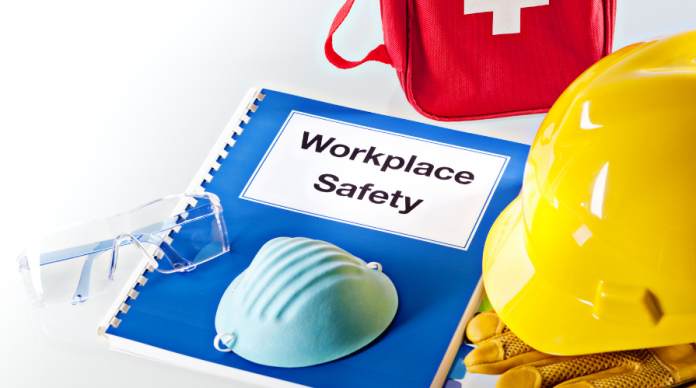Table of Contents
There has never been a more important time to focus on workplace safety and preventing on the job injuries and accidents. With the pandemic, there’s been an increased emphasis on keeping workers safe.
Every time an employee is hurt while they are on the job, it translates to potential lost time and opens you and your company up to costly claims due to negligence.
If you have repeated violations or extreme instances of accidental death you may also face hefty fines. Fortunately, you can avoid most of these problems if you implement proactive programs that are designed to improve safety on the job.
All areas of your business will need to be covered, from your manufacturing plant to warehouse operations and even activities that take place away from your primary locations. For these programs to have a high impact and be successful, you’ll need to cover all levels within your organization.
6 Simple Steps to Improve Workplace Safety
1. Keep an Eye Out for Unsafe Conditions
 One of the best ways to not only improve your workplace safety but to improve the lives of others is to consistently focus on the conditions and hazards that are present on the job.
One of the best ways to not only improve your workplace safety but to improve the lives of others is to consistently focus on the conditions and hazards that are present on the job.
Your executives, warehouse managers and direct supervisors should regularly walk the floor and look for situations that could lead to accidents or related issues. Over time, they’ll develop a sense of troublesome areas that need immediate action.
2. Address Job and Life Stress
We all experience high levels of stress at different times. When employees are working in an environment with dangerous machinery, even a brief loss of focus or attention can have devastating results.
Placing an emphasis on looking after mental health is not only a humanity driven move but also a great stride in safety procedures. Your company should provide caring counsellors and professionals who are non-judgmental and can help both workers and managers reduce the levels of stress in their lives.
3. Create Safety Action Plans
 When you identify areas that require special attention, you should take action and develop a clear safety plan. If you have assembled a team that focuses on these issues, you can meet with them to come up with the best fix and then publish that finding through signs or training that help people take any corrective steps that are necessary.
When you identify areas that require special attention, you should take action and develop a clear safety plan. If you have assembled a team that focuses on these issues, you can meet with them to come up with the best fix and then publish that finding through signs or training that help people take any corrective steps that are necessary.
4. Implement Fleet Safety Technology
 As part of your emphasis on safety, you’ll also want to protect your fleet and the employees who drive for you. One of the ways to do this is to implement leading-edge collision avoidance systems (CAS) that can help drivers avoid accidents entirely or limit damage or injury if one does occur. It is helpful if you review the types of CAS and how they can help keep your employees safe.
As part of your emphasis on safety, you’ll also want to protect your fleet and the employees who drive for you. One of the ways to do this is to implement leading-edge collision avoidance systems (CAS) that can help drivers avoid accidents entirely or limit damage or injury if one does occur. It is helpful if you review the types of CAS and how they can help keep your employees safe.
5. Teach Good Posture to Preserve Back Health
When employees have back problems caused by lifting heavy items or from repetitive strain due to poor posture and ergonomics, the time lost, and costs of the injury can really add up.
Back injuries can be debilitating and can cause a tremendous amount of pain. It’s important to teach workers the correct form for lifting and provide furniture that incorporates an ergonomic design.
6. Provide Health and First Aid Training
 If an emergency or other critical health issues arises in your workplace, it will help to know that your workforce has been fully trained and certified in first aid. You should also have safety equipment such as a portable defibrillator on hand. Taking these steps can help keep both workers and visitors safe and can also help prevent a tragedy.
If an emergency or other critical health issues arises in your workplace, it will help to know that your workforce has been fully trained and certified in first aid. You should also have safety equipment such as a portable defibrillator on hand. Taking these steps can help keep both workers and visitors safe and can also help prevent a tragedy.


